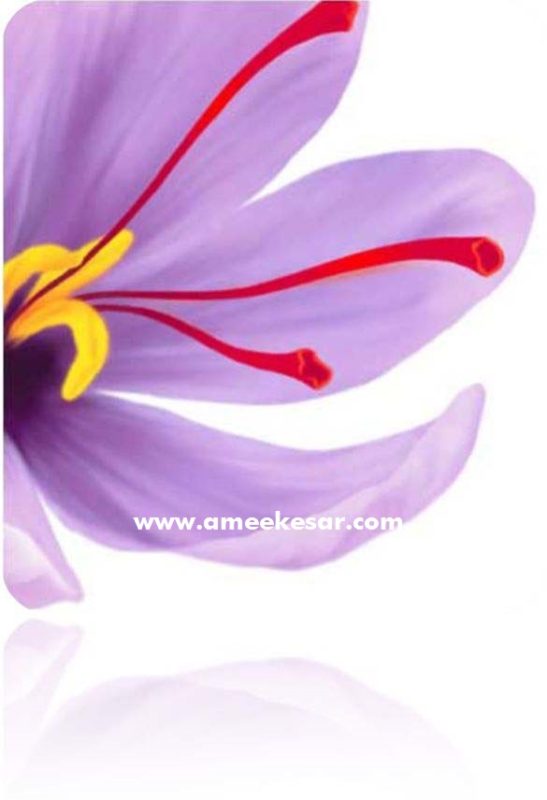Saffron Nutrition Facts

The Crocus sativus plant grows to about 5-10 cm in height and bears lavender colored flowers during each season which lasts from October till November. Each flower features perianth which consists of stalk, known as “style”, connecting to the three “stigmas” or “threads” to the rest of the plant. These orange-yellow colored stigmas along with the style constitute “saffron” which is used as spice.
Good crop production demands cool dry climate with well drained rich fertile soil and irrigation facilities or sufficient amount of rain fall. The flowers are generally harvested during the early morning hours and soon the stigma separated.
Saffron has distinct flavour because of the chemical components in it picrocrocin and safranal. It also contains a natural carotenoid chemical compound, crocin, which gives saffron its golden-yellow hue and safranal, which gives saffron its distinct hay-like flavor. These traits along with its medicinal properties make it a valuable ingredient in many foods worldwide.
See the table below for in depth analysis of nutrients:
| Saffron (Crocus Sativus),Nutritional value per 100 g. | ||
| Principle | Nutrient Value | Percentage of RDA |
| Energy | 310 Kcal | 15.5% |
| Carbohydrates | 65.37 g | 50% |
| Protein | 11.43 g | 21% |
| Total Fat | 5.85 g | 29% |
| Cholesterol | 0 mg | 0% |
| Dietary Fiber | 3.9 g | 10% |
| Vitamins | ||
| Folates | 93 mcg | 23% |
| Niacin | 1.46 mg | 9% |
| Pyridoxine | 1.010 mg | 77% |
| Riboflavin | 0.267 mg | 20% |
| Vitamin A | 530 IU | 18% |
| Vitamin C | 80.8 mg | 135% |
| Electrolytes | ||
| Sodium | 148 mg | 10% |
| Potassium | 1724 mg | 37% |
| Minerals | ||
| Calcium | 111 mg | 11% |
| Copper | 0.328 mg | 37% |
| Iron | 11.10 mg | 139% |
| Magnesium | 264 mg | 66% |
| Manganese | 28.408 mg | 1235% |
| Phosphorus | 252 mg | 36% |
| Selenium | 5.6 mcg | 10% |
| Zinc | 1.09 mg | 10% |

